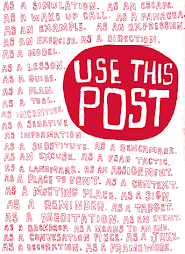 Bonnie Stewart (@bonstewart)
Bonnie Stewart (@bonstewart)3/8/13 6:42 AM
a reasonable, nuanced discussion of MOOC non-completion & why ppl sign up in the first place:insidehighered.com/news/2013/
the intrigue - the audit-ability
which is what we're after no - the learning for learning sake - not for the grade/credentialing..
The National Science Foundation put $200,000 toward a study of MOOC users. The study, led by the Massachusetts Institute of Technology’s Teaching and Learning Laboratory, is based on a detailed look at data from edX’s circuits and electronics course last year. EdX was founded by MIT and Harvard University.
oh my
Phil Hill, an education technology consultant, has come up with four categories of MOOC users: lurkers, drop-ins, passive participants and active participants.
Any existing groups could change if MOOCs start charging for entry or make other changes to their registration process.
“I don’t know how long MOOCs in this current form will last,” Belanger said. “I think [users] just plan to enjoy it while it lasts.”
exactly - lurkers, drop-ins, ...
 Andrea Graziano (@digitag)
Andrea Graziano (@digitag)3/8/13 6:43 AM
You Are Stardust: Teaching kids about the whimsy of the universe in stunning illustrated dioramas | Brain Pickings brainpickings.org/index.php/
the whimsy of the universe, begs whimsical travels/adventures... perhaps it has little to do with formal teaching..
yeah - like this
 Jennifer Borgioli (@DataDiva)
Jennifer Borgioli (@DataDiva)3/8/13 7:41 AM
@willrich45 have you seen the "how I work" series on @lifehacker? Not same folks but same idea:lifehacker.com/how-i-work/
watching people doing, per whimsy - your choice, vs teaching/presenting often times to people who aren't even asking to be taught - presented - that.
and how to do that.. ? city as school - as the day..
 Mark Headd (@mheadd) Mark Headd (@mheadd)3/8/13 7:41 AM "What if, before students graduated, we guided them out of their classrooms and into the city..." -@alexknowshtml dangerouslyawesome.com/2011/ |
So what if, instead of pointing fingers at the universities and the companies and the government, we built between them. What if, before students graduated, we guided them out of their classrooms and into the city, encouraging them to complete their academic work outside of the walls of the academic institution.
The ripple effects of this approach helps ensure that the initial effort is sustainable, and is likely to take on a life of its own.
It’s also independent of “political” agendas – if we abstract away companies and their motives by focusing on the individuals and THEIR motives, the relationships are natural and human.
Over the next year, we’re going to prototype this interaction at Indy Hall via a program based on these principals called “Indy Study Hall”. Students will be able to use Indy Hall as a home-base for “getting work done”, just like our members do. Some adjustments will be made to the experience to make it more conducive to students’ lifestyles, but we’ll also be baking in the opportunities for interaction with members who have the interest in becoming a mentor.
We’ve already proven that our “trusted relationships before transaction” works. And we know that it’s not so unique as to be an anomaly. Now we just need to get this practice it in the hands of students before the business world has an opportunity to teach them the bad-habit alternative.
 DML Research Hub (@dmlresearchhub) DML Research Hub (@dmlresearchhub)3/8/13 7:46 AM Yes, You Can Teach and Assess Creativity!bit.ly/WyD78g via @betamiller @edutopia |
Don't forget to make them age- or grade-level appropriate so that students can understand the targets and how they are being assessed. You might create a rubric from these quality indicators or keep them as overall goals for the students to work on throughout the year. Wiggins mentioned this rubric as a start. The February 2013 issue of ASCD's Educational Leadership also hasan article that includes a rubric.
love grant.. maybe I'm misunderstanding. maybe being misrepresented?
because...
oh my.There are some specific thinking skills that creative people use. You will often find these in the quality indicators of creative people and embedded in the language. One example is synthesis. In synthesis, people combine sources, ideas, etc. to solve problems, address an issue or make something new. Being able to synthesize well can be a challenge. If we want our students to do well with this creative skill, we need to model the thinking of synthesis in a low-stakes, scaffolding activity that they can translate into a more academic pursuit. I find that the more I help students understand and practice these thinking skills, the better prepared they are to be creative! These mini-lessons and activities occur within the context of a PBL project to support student learning.
interesting.
seems to be what Ed needs...
could we possibly zoom out far enough to find/ model/ create/prototype public Ed... via the smorgasbord the world .. universe... has to offer..?
oh my
 George Couros (@gcouros)
George Couros (@gcouros)3/8/13 7:46 AM
Posted yesterday: Learning From the #Twitter Archives #psd70 #cpchat #edchatbit.ly/YDUVMr
First of all, it is pretty amazing to have these little snapshots of my life saved in this archive. To be able to go through my tweets and look at how I was when I struggled, excelled, or was somewhere in the middle, is pretty remarkable. I actually found myself laughing and crying going through my own tweets, just in aww of how I have grown in the last few years.
this.. non linear portfolio - michaels work with twitter, deb roy's video now twitter..
 BreneBrown (@BreneBrown)
BreneBrown (@BreneBrown)3/8/13 7:53 AM
Talk about showing up! 3 daring talks from 2013 @TED_TALKS: (@AmandaPlamer @sugatamitra@urbanfoodforest) bit.ly/Wa8Qdq
 BreneBrown (@BreneBrown) BreneBrown (@BreneBrown)3/8/13 8:00 AM @sandymaxey She was really fantastic. It's controversial among artists, but it's an important conversation! |




































